Overview
This article examines critical strategies that wineries can adopt to enhance their direct sales. It underscores the necessity of personalized marketing, digital engagement, and sustainability. By optimizing online platforms, leveraging data analytics for consumer insights, and crafting compelling brand narratives, wineries can significantly boost customer loyalty and drive sales in an increasingly competitive market.
Wineries must recognize that personalized marketing is not merely an option but a vital component of their strategy. Tailoring marketing efforts to individual consumer preferences fosters deeper connections and enhances engagement. Furthermore, the use of data analytics provides invaluable insights into consumer behavior, enabling wineries to make informed decisions that resonate with their target audience.
Moreover, sustainability has become a key differentiator in the wine industry. Consumers are increasingly drawn to brands that demonstrate a commitment to sustainable practices. By integrating sustainability into their brand narratives, wineries can not only attract environmentally conscious consumers but also establish long-term loyalty.
In conclusion, the implementation of these strategies is essential for wineries aiming to thrive in a competitive landscape. By embracing personalized marketing, harnessing the power of data analytics, and committing to sustainability, wineries can effectively enhance their direct sales and foster enduring customer relationships.
Introduction
The wine industry is undergoing a significant transformation. Family-owned wineries are confronted with the pressing need to adapt to evolving consumer preferences and competitive pressures. As direct-to-consumer (DTC) sales become increasingly vital, these wineries have a remarkable opportunity to enhance their revenue through innovative strategies that foster deeper connections with patrons. However, how can these establishments effectively navigate this complex landscape to not only survive but thrive? This article explores ten actionable strategies that empower wineries to boost their direct sales, leveraging insights from market trends and consumer behavior to create compelling experiences that resonate with today’s wine enthusiasts.
Enocap: Transformative DTC Strategies for Family-Owned Wineries
Enocap champions innovative strategies for wine direct sales, empowering family-owned vineyards to forge meaningful relationships with patrons. This approach hinges on:
- Crafting personalized promotional campaigns that resonate with target audiences
- Optimizing online sales platforms
- Enhancing customer engagement through compelling storytelling
By leveraging data analytics, vineyards can glean insights into consumer preferences, enabling them to tailor their offerings effectively. This targeted methodology not only drives increased sales but also cultivates .
For instance, vineyards employing customized promotional strategies have reported significant improvements in engagement and retention rates, underscoring the financial benefits of such initiatives. As the wine industry evolves, embracing innovative promotional tactics such as wine direct sales becomes imperative for wineries striving to excel in a competitive landscape.
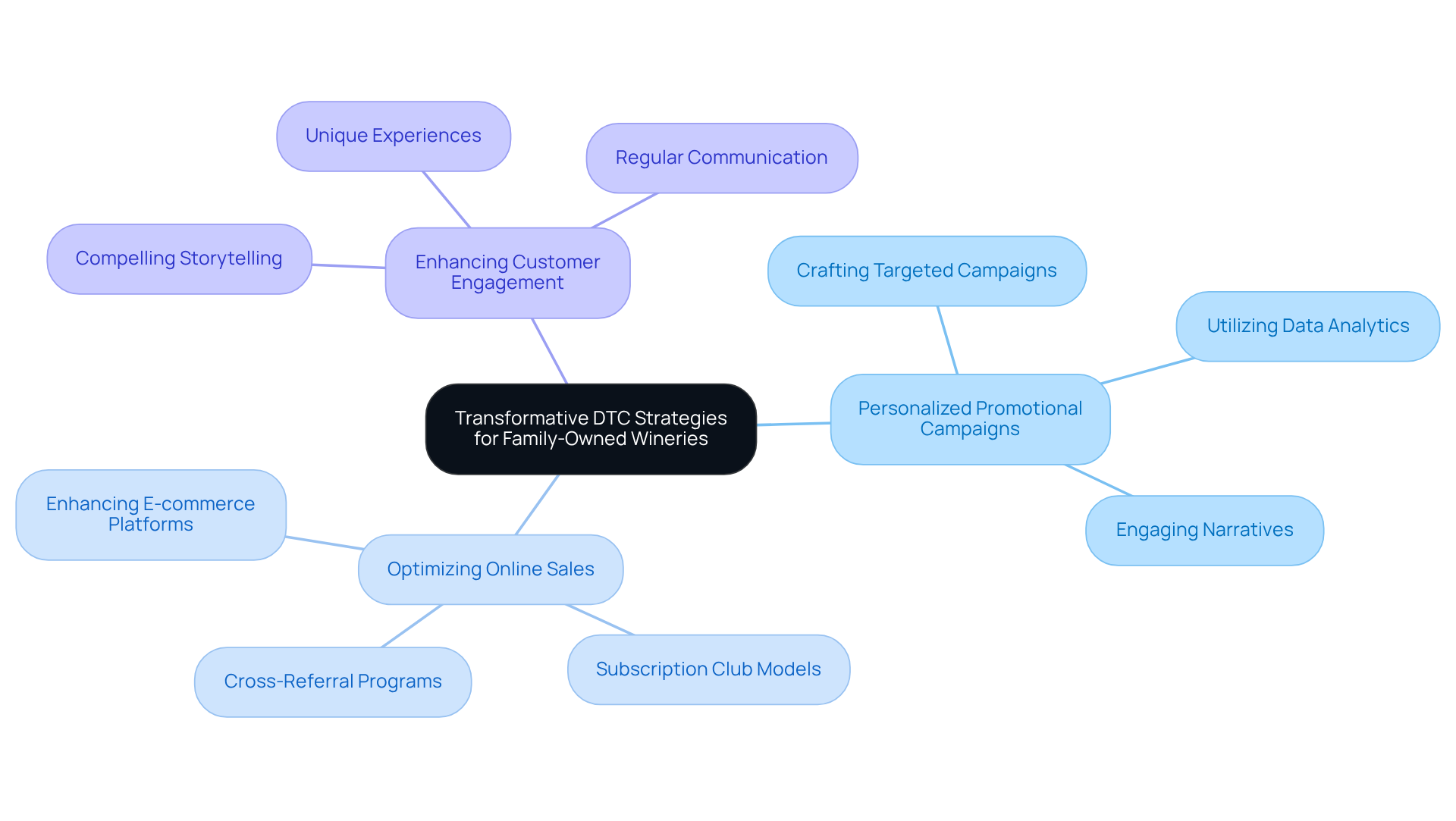
WineDirect: Comprehensive DTC Wine Report Insights
WineDirect's comprehensive DTC reports reveal critical trends that underscore the increasing importance of e-commerce and the growing consumer preference for personalized experiences in wine direct sales. Notably, the average order value of direct-to-consumer shipments has risen by 13%, reaching $521, while the average price per bottle shipped is now $52.68, reflecting a significant 38% increase since 2018. Wineries can leverage these insights to refine their marketing strategies, focusing on digital channels that resonate with their target audience.
Enocap emphasizes the necessity of building sustainable channels for wine direct sales that drive consistent growth. By transforming casual buyers into loyal club members through proven strategies, wineries can enhance their customer base. The reports also highlight the significance of maintaining competitive pricing and to bolster retention rates. Furthermore, the shift towards larger orders—with the average order size rising to 9.9 bottles—highlights the imperative for producers to adjust their sales strategies accordingly.
Social media platforms are emerging as essential channels for wine direct sales, enabling producers to connect with consumers effectively. By creating engaging brand narratives that resonate with their audience, wineries can foster deeper connections and drive sales. In this evolving landscape, adapting to these trends is not just beneficial but essential for long-term success.
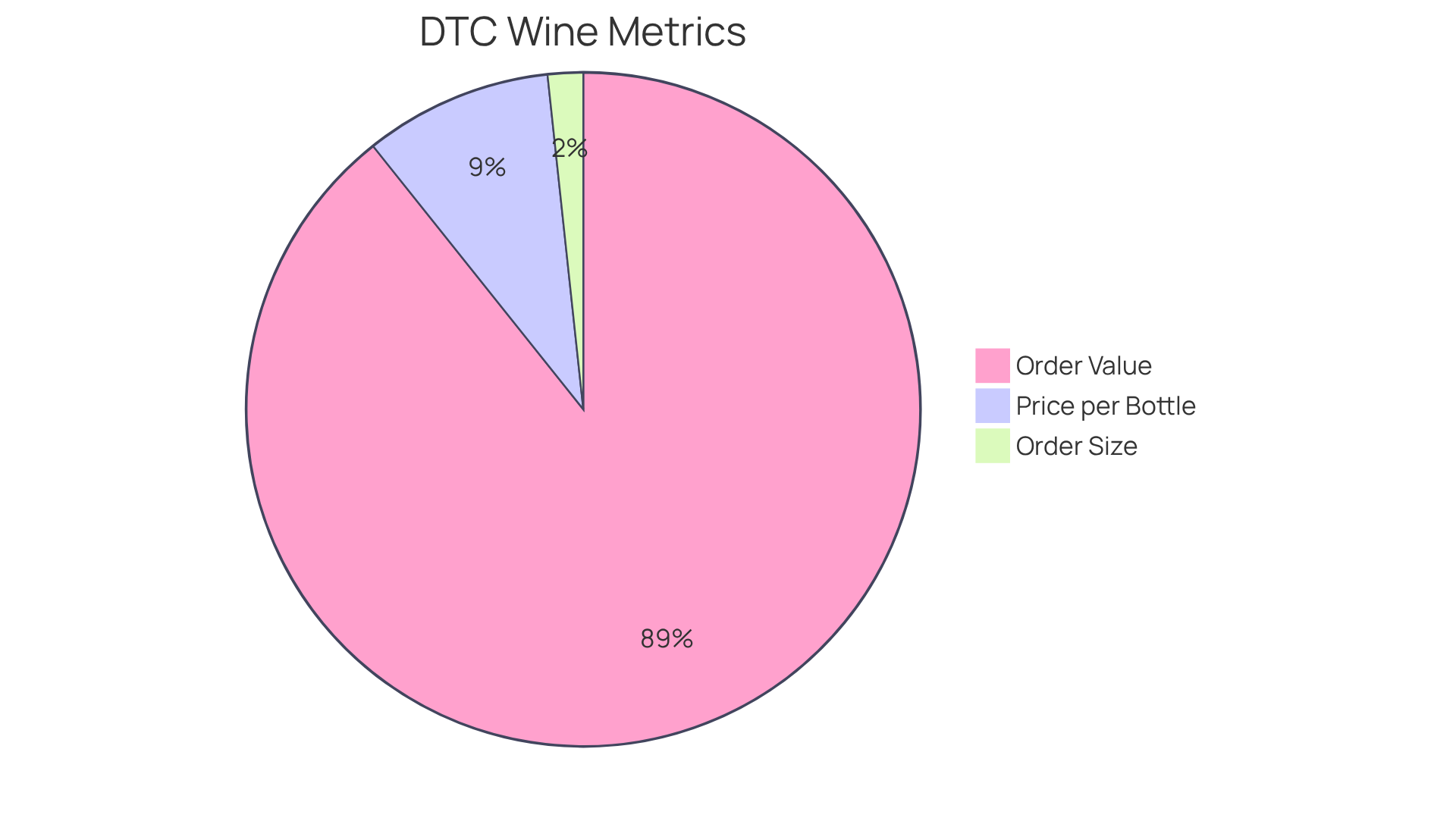
Enocap: Optimize Your Wine Club Memberships for Increased Revenue
To enhance club memberships, wineries must prioritize the development of that resonate with their target audience. This includes:
- Providing exclusive access to limited releases
- Personalized beverage selections
- Engaging member events that cultivate a sense of community
Research shows that wine clubs offering at least three non-product benefits achieve 22% higher retention rates, emphasizing the importance of diverse member experiences. Moreover, leveraging data analytics to gain insights into member preferences allows producers to tailor communications effectively, thereby enhancing the overall member experience. This strategic approach not only boosts retention but also drives revenue growth, making it essential for establishments striving to thrive in a competitive market.
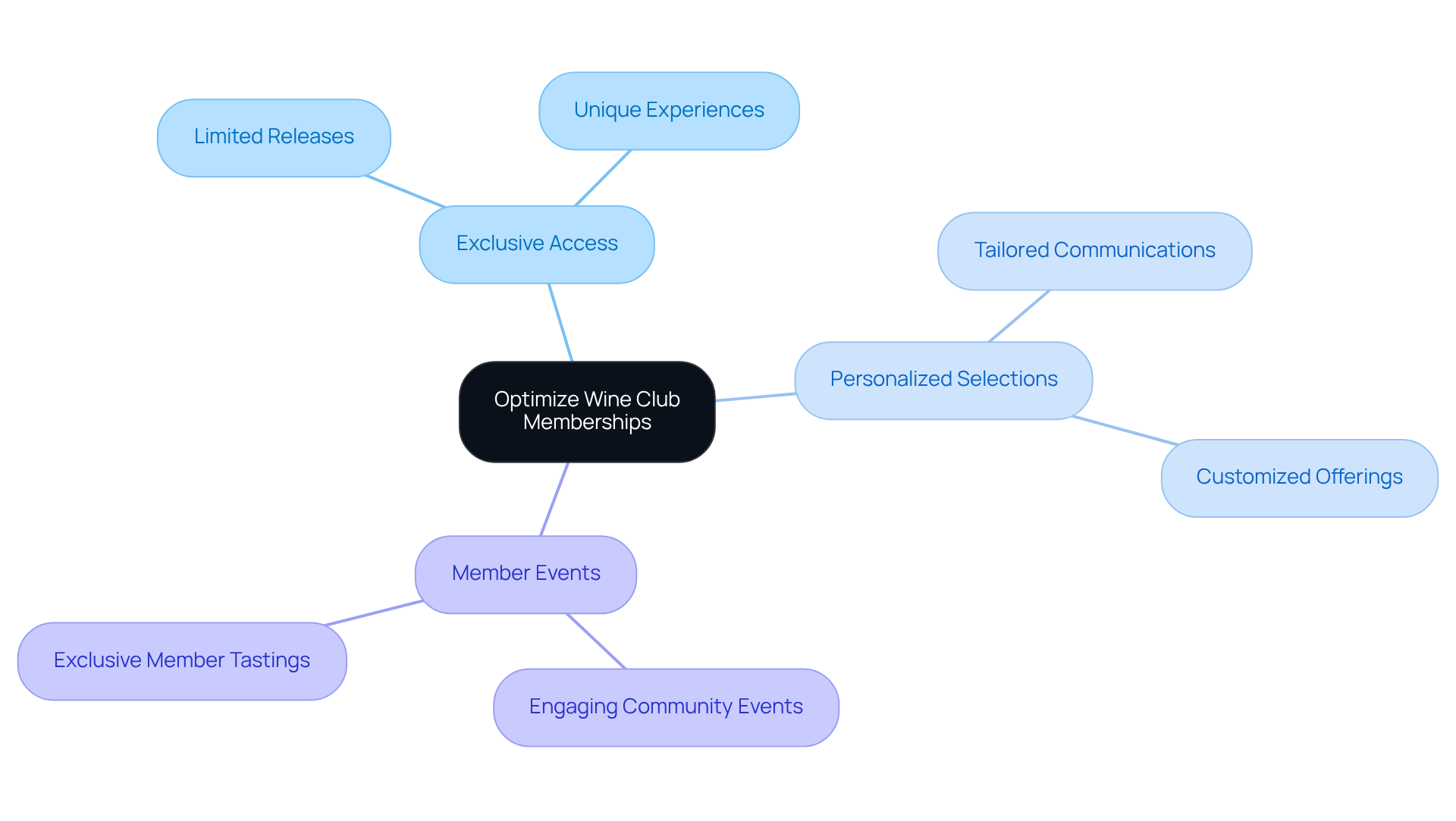
WineDirect: Strategies to Reduce Shipping Costs and Boost Consumer Satisfaction
Wineries can significantly reduce shipping costs by implementing flat-rate shipping options, optimizing packaging to minimize weight, and negotiating better rates with carriers. This approach not only enhances efficiency but also positions wineries favorably in a competitive market. Furthermore, providing local pickup choices is especially beneficial for improving customer satisfaction and encouraging loyalty. This flexibility enables customers to avoid shipping costs and receive their orders directly, fostering a personal connection with the vineyard.
In 2025, local pickup options are increasingly favored, as they not only reduce costs but also enhance the overall customer experience. Clear communication regarding shipping policies and tracking further enhances satisfaction, encouraging loyalty and repeat business. Wineries that have adopted have seen a notable increase in consumer engagement and satisfaction, reinforcing the value of these options in today's competitive landscape.
To effectively implement local pickup options, vineyards should consider:
- Establishing designated collection sites
- Promoting these services through their promotional channels
This strategy not only enhances brand storytelling but also aligns with strategic capital planning initiatives, ultimately driving growth and customer retention.
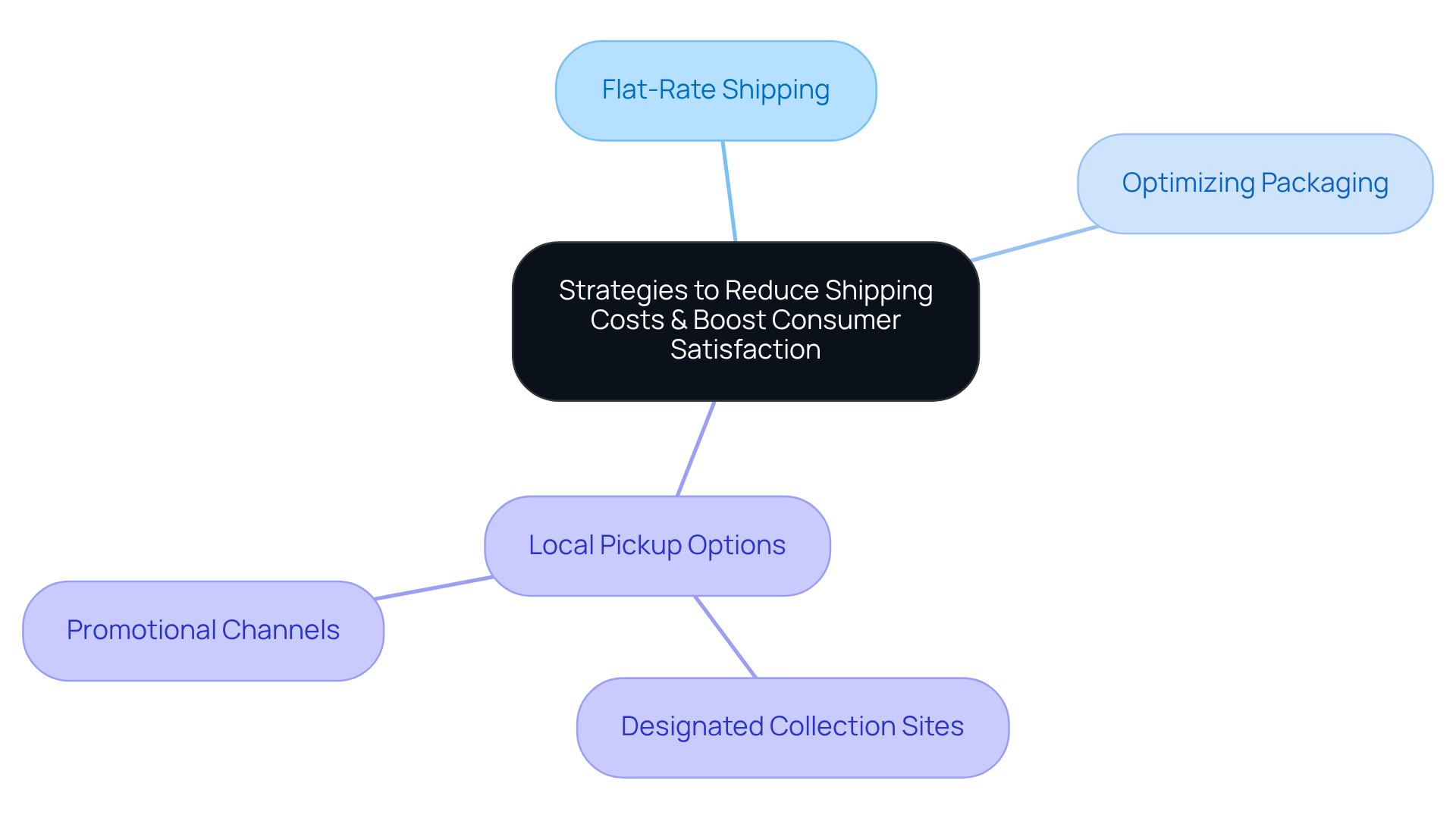
Enocap: Effective Demand Generation Techniques for Wineries
To effectively generate demand, wine producers must harness the power of , email campaigns, and content marketing to engage potential customers. In 2025, social media platforms are transforming into wine direct sales channels, enabling producers to showcase their products and connect with consumers in real-time. By creating high-quality, shareable content that tells the winery's unique story, brands can captivate audiences and drive traffic to their sales channels.
Hosting virtual tastings and educational webinars has proven to be a successful strategy for attracting new audiences, particularly as e-commerce wine sales continue to rise. These interactive experiences not only enhance customer engagement but also foster deeper connections with consumers, leading to increased loyalty and repeat purchases. For instance, wineries that have embraced online tastings report significant growth in customer interactions and sales conversions.
Successful social media promotion campaigns in the wine industry often leverage short-form video content, which resonates well with younger demographics. Brands such as Eleven Eleven have incorporated automated customer flows into their strategies, enhancing engagement through personalized interactions. As Ellie Anest, CEO of Eleven Eleven, notes, "These automations create touchpoints with our customers and generate revenue that would be difficult to capture manually."
Integrating these demand generation methods can greatly influence a winery's wine direct sales growth. Therefore, it is crucial for wineries to adjust their marketing strategies to satisfy changing buyer expectations.
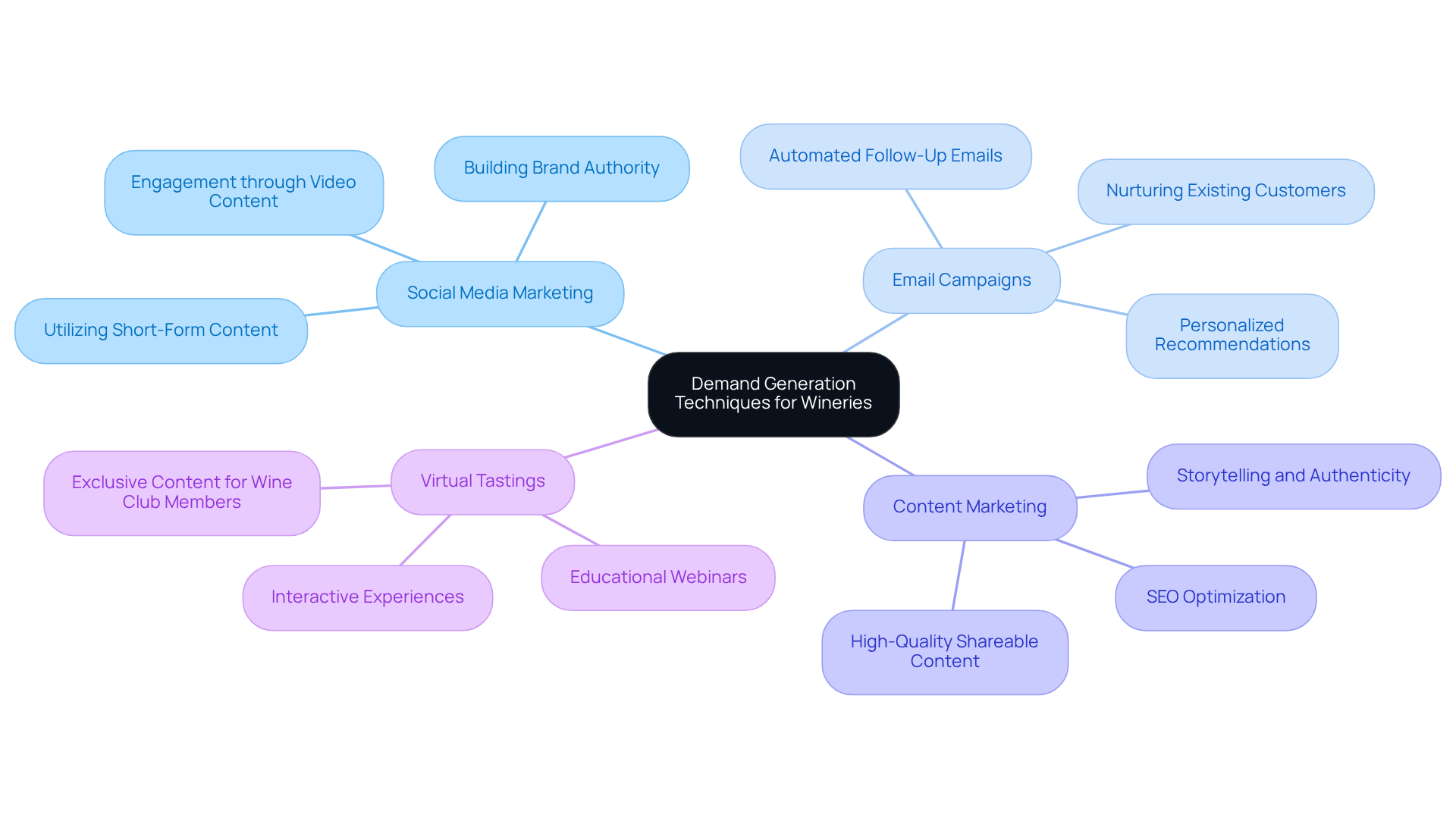
WineDirect: Eco-Conscious Fulfillment Solutions to Attract Consumers
Wineries can significantly enhance their appeal by adopting , particularly through the use of sustainable packaging materials and optimized logistics that minimize carbon footprints. Innovative packaging solutions, such as Green Cell Foam—which is compostable and can be discarded in the kitchen sink—and ISTA Certified materials not only safeguard beverages during transportation but also diminish environmental impact by 30-40% compared to conventional packaging.
Implementing recycling and waste reduction strategies in shipping processes resonates with environmentally conscious individuals who increasingly prioritize sustainability in their purchasing decisions. In fact, over 46% of regular wine drinkers prefer sustainable wines, and 22.81% of consumers consider environmental impact influential in their purchasing decisions, indicating a strong market for producers that effectively communicate their commitment to eco-friendly practices.
Emphasizing these sustainability initiatives in promotional content cultivates brand loyalty and draws a wider audience, establishing producers as frontrunners in a swiftly changing sector dedicated to environmental stewardship.
As Jessica Foye stated, "Sustainability is not just a trend; it's a crucial route to ensuring the long-term success of vineyards and the preservation of our environment."
As the wine sector approaches 2025, adopting sustainable packaging will be essential for preserving competitiveness and fulfilling buyer expectations.
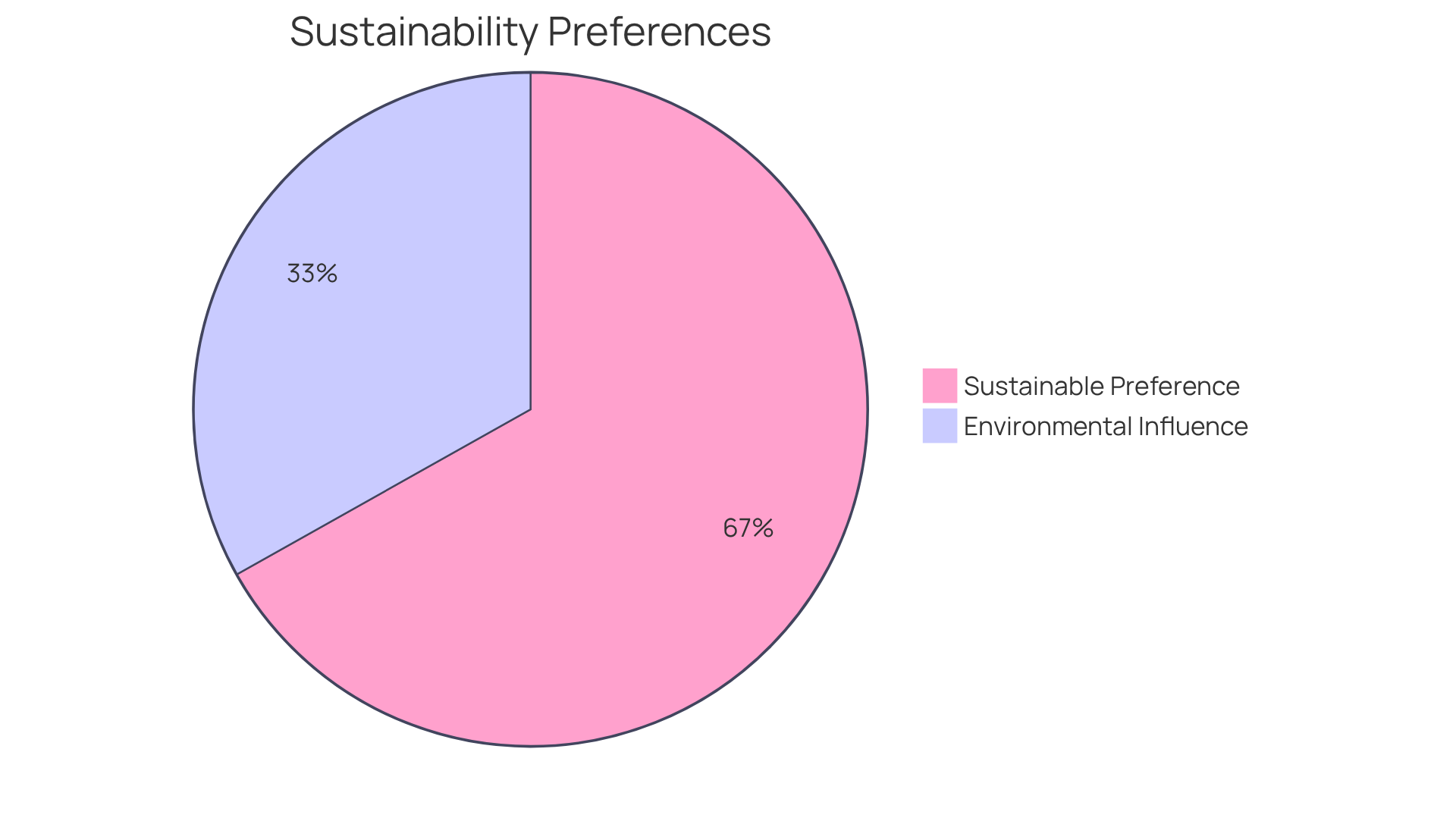
Enocap: Craft Compelling Brand Narratives to Engage Consumers
Wineries must prioritize the development of that showcase their heritage, winemaking processes, and distinctive offerings. Compelling narratives resonate emotionally with patrons, enabling vineyards to forge stronger ties with their audience. Effective storytelling not only enhances brand visibility but also fosters loyalty and engagement.
By leveraging various platforms such as social media, blogs, and newsletters, vineyards can disseminate these narratives widely, connecting with a broader audience. As industry specialists emphasize, emotional storytelling is essential for promoting beverages; it transforms buyer interactions into significant experiences.
Successful wineries employ storytelling techniques that highlight their unique identities and values, ultimately enhancing customer engagement and loyalty. This approach not only attracts potential purchasers but also fortifies the emotional connections individuals form with the brand, making storytelling a vital component of contemporary marketing in the beverage industry.
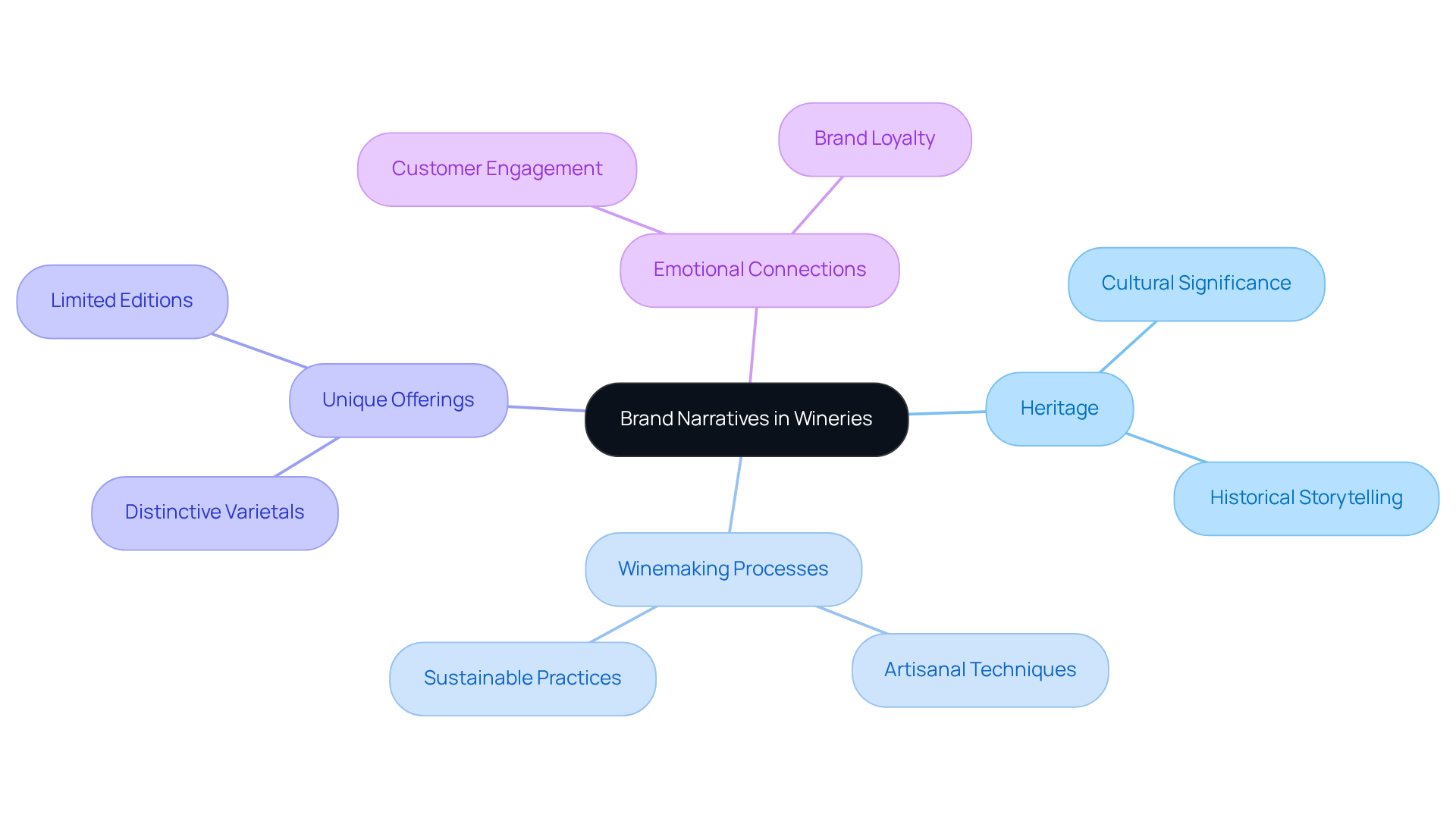
WineDirect: Insights from the 2023 Direct-to-Consumer Impact Report
The 2023 Direct-to-Consumer Impact Report presents critical insights into buyer preferences, underscoring the pivotal role of personalized experiences and digital engagement in driving beverage sales. Wineries must enhance their online presence and leverage data analytics to tailor their offerings effectively. Notably, the demand for sustainable practices is on the rise, with 74% of consumers more likely to trust brands that showcase their environmental impact. This trend signifies a broader movement towards transparency in sourcing, as 57% of respondents favor wines that disclose their carbon footprint.
Wineries that adeptly adapt to these not only cultivate customer loyalty but also position themselves for growth in an increasingly competitive market. By prioritizing tailored experiences and sustainability, vineyards can meet the expectations of today’s environmentally conscious buyers and thrive in 2025 and beyond.
As Rob McMillan notes, "The typical vineyard today obtains 30 percent of its overall revenue from tasting room sales and 24 percent from the wine club," highlighting the importance of direct customer interaction. To further refine their strategies, vineyards should consider conducting surveys to gain deeper insights into consumer preferences regarding sustainability.
Enocap emphasizes the necessity for family-owned vineyards to establish sustainable channels for wine direct sales that foster consistent growth and transform casual buyers into dedicated club members through proven methods such as personalized marketing, exclusive member benefits, and community engagement initiatives.
By implementing these transformative DTC strategies and capital advisory, producers can significantly enhance their growth and loyalty within the beverage industry.
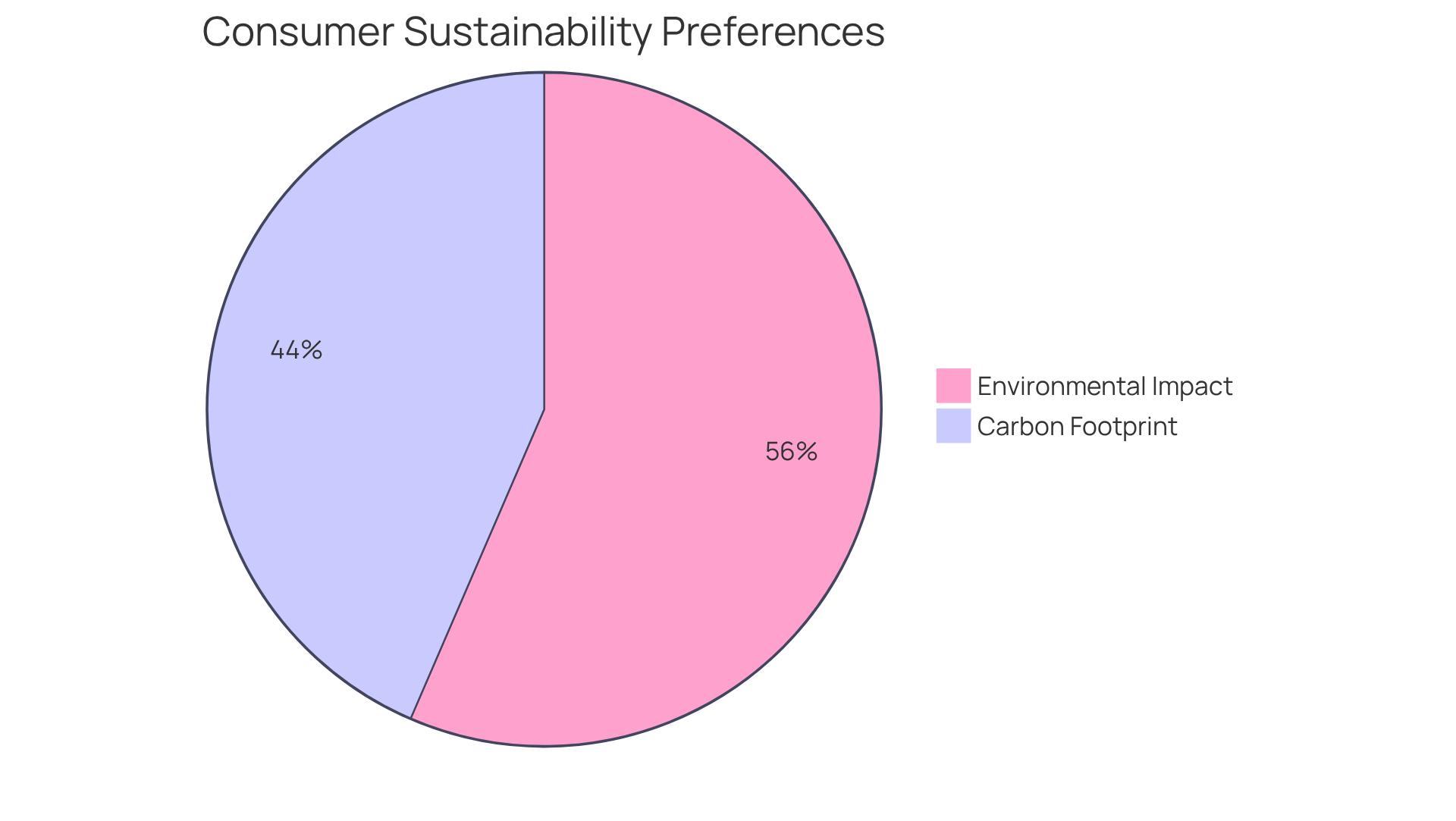
Enocap: Adapt to Changing Consumer Preferences with Market Intelligence
To thrive in the competitive beverage sector, producers must harness market insights to adapt to evolving consumer preferences. Regular market research is indispensable, enabling wineries to analyze sales data and effectively monitor industry trends in wine direct sales.
The U.S. beverage market was valued at USD 339.53 billion in 2020 and is projected to reach USD 456.76 billion by 2028, reflecting a robust CAGR of 4.30% during this period. This growth is propelled by innovations and shifting consumer behaviors, particularly a marked transition towards organic and sustainably produced wines that appeal to health-conscious consumers.
By grasping these dynamics, producers can refine their marketing strategies, enhance product offerings, and elevate customer engagement. Enocap's comprehensive advisory services empower family-owned wineries to transform casual buyers into loyal club members through proven strategies in wine direct sales.
This adaptability is crucial, especially as younger demographics increasingly favor low- or no-alcohol options. Highlighting the significance of market research, industry experts emphasize that informed decision-making is essential for long-term success in a rapidly changing landscape.
Wineries that actively engage in market research, supported by Enocap's and brand storytelling, will be better positioned to meet customer demands and solidify their market presence.
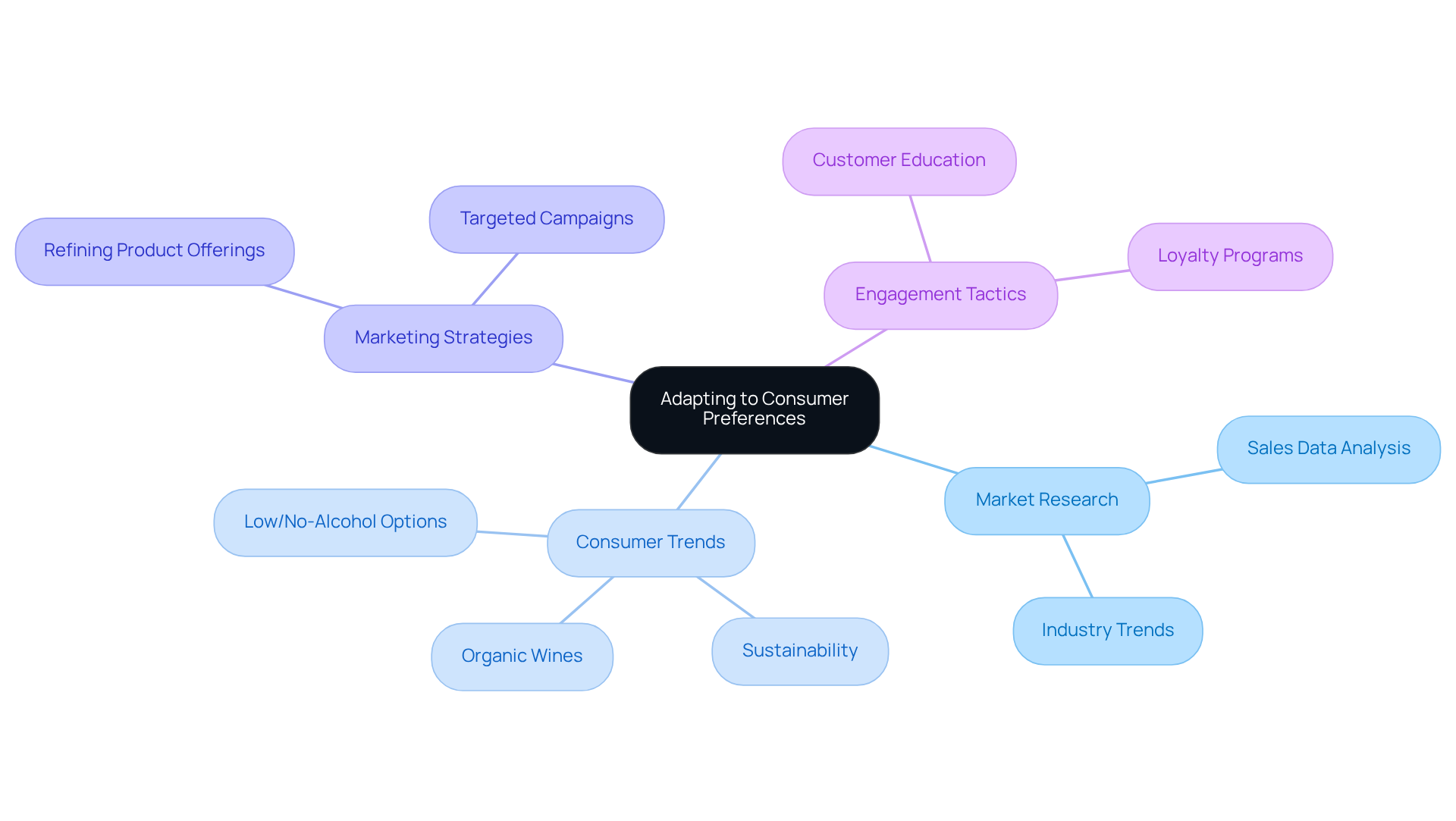
WineDirect: Leverage AI to Elevate Your Winery's DTC Sales
Wineries can significantly enhance their wine direct sales by leveraging the power of . These technologies empower vineyards to customize promotional efforts, anticipate buyer preferences, and optimize inventory management. By examining customer behavior, AI-powered tools enable vineyards to tailor their offerings and promotional strategies, ensuring they meet the evolving needs of their clientele.
Consider this: personalized recommendations can substantially boost conversion rates and elevate average order value. Studies indicate that 76% of consumers are more likely to purchase from brands that personalize their marketing.
Furthermore, integrating AI into operations not only enhances efficiency but also improves customer experiences, ultimately driving substantial sales growth. As the wine industry continues to evolve, leveraging data analytics will be crucial for wineries striving to remain competitive and relevant in 2025 and beyond.
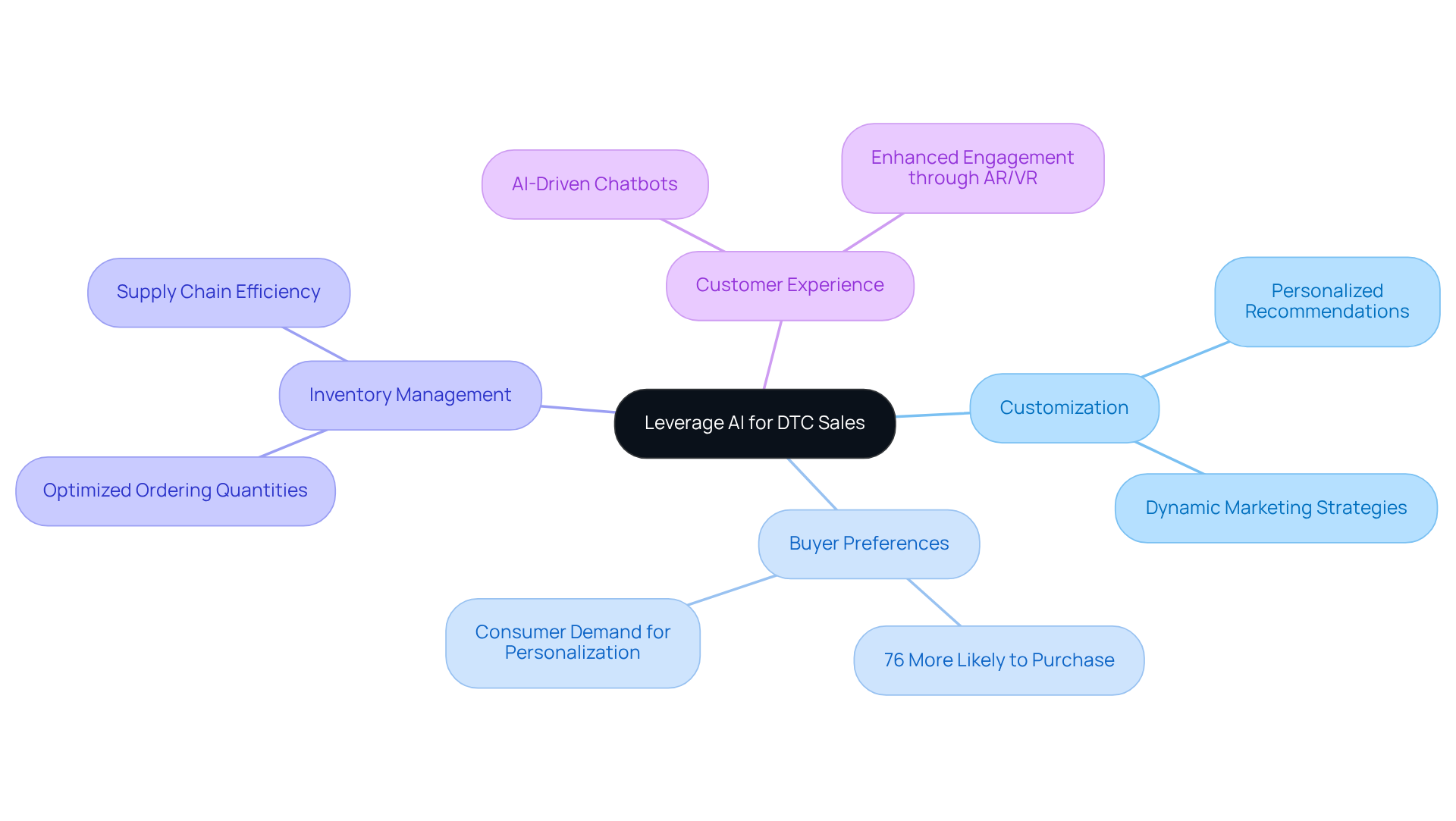
Conclusion
Embracing innovative direct-to-consumer strategies is not just beneficial but essential for wineries striving to excel in the competitive landscape of 2025. By prioritizing personalized marketing, sustainable practices, and compelling storytelling, family-owned vineyards can cultivate deeper connections with consumers, thereby enhancing their overall sales performance. The integration of data analytics and AI empowers wineries to anticipate buyer preferences, optimize inventory, and tailor their offerings, ensuring they meet the ever-evolving market demands.
Key insights underscore the necessity of optimizing online platforms, enhancing customer engagement, and implementing cost-effective shipping solutions. Strategies such as:
- Developing distinctive wine club offerings
- Leveraging social media for brand narratives
- Adopting eco-conscious fulfillment methods
These approaches resonate profoundly with today’s environmentally aware consumers. These approaches not only drive sales but also foster long-term loyalty and satisfaction among patrons.
As the wine industry approaches a pivotal moment, it is crucial for wineries to adapt their strategies to align with shifting consumer preferences. By investing in market intelligence, embracing sustainable practices, and utilizing advanced technologies, wineries can strategically position themselves for success. The future of wine direct sales hinges on the ability to connect authentically with consumers, creating memorable experiences that drive both engagement and revenue.
Frequently Asked Questions
What is Enocap's approach to direct-to-consumer (DTC) strategies for family-owned wineries?
Enocap focuses on crafting personalized promotional campaigns, optimizing online sales platforms, and enhancing customer engagement through compelling storytelling to empower family-owned vineyards in their direct sales efforts.
How can data analytics benefit wineries in their DTC strategies?
By leveraging data analytics, wineries can gain insights into consumer preferences, allowing them to tailor their offerings effectively, drive increased sales, and cultivate long-term customer loyalty.
What improvements have wineries reported from customized promotional strategies?
Wineries employing customized promotional strategies have reported significant improvements in engagement and retention rates, highlighting the financial benefits of these initiatives.
What trends does WineDirect's DTC reports reveal about wine direct sales?
WineDirect's reports indicate a 13% increase in the average order value of direct-to-consumer shipments, reaching $521, and a 38% increase in the average price per bottle shipped since 2018, emphasizing the growing importance of e-commerce and personalized experiences.
What strategies can wineries use to build sustainable channels for wine direct sales?
Wineries can transform casual buyers into loyal club members through proven strategies, maintain competitive pricing, enhance customer service, and adapt to increasing order sizes to drive consistent growth.
How important are social media platforms for wine direct sales?
Social media platforms are essential for wine direct sales, enabling producers to effectively connect with consumers and create engaging brand narratives that resonate with their audience.
What are key elements for enhancing wine club memberships?
Key elements include providing exclusive access to limited releases, personalized beverage selections, and engaging member events that foster a sense of community.
What impact do non-product benefits have on wine club retention rates?
Wine clubs that offer at least three non-product benefits achieve 22% higher retention rates, underscoring the importance of diverse member experiences.
How can wineries improve their member experience and retention?
By leveraging data analytics to understand member preferences and tailoring communications effectively, wineries can enhance the overall member experience, boost retention, and drive revenue growth.




